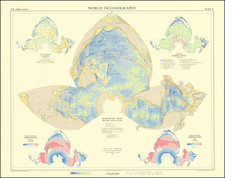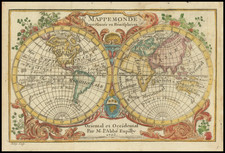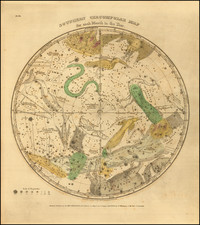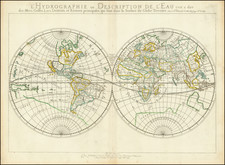This 1720 engraving by Johann Baptist Homann was published in Nuremberg and offers a detailed representation of celestial and terrestrial globes and an armillary sphere. It delineates the artificial constructions designed to model and understand the heavens and Earth, capturing the scientific and artistic ambitions of the early 18th century.
Johann Baptist Homann, a prominent German cartographer, was renowned for his detailed and accurate engravings that contributed to the rich legacy of 18th-century European cartography. This particular work showcases his ability to fuse scientific precision with aesthetic elegance. The engraving serves as an instructive tool, detailing the major and minor circles, lines, and points that constitute the artificial spheres, thereby mirroring the natural world's perceived order and structure.
Johann Baptist Homann (1663-1724) was a mapmaker who founded the famous Homann Heirs publishing company. He lived his entire life in Bavaria, particularly in Nuremberg. Initially, Johann trained to become a priest before converting to Protestantism and working as a notary.
In 1702, Johann founded a publishing house that specialized in engravings. The firm flourished, becoming the leading map publisher in Germany and an important entity in the European map market. In 1715, Johann was named Imperial Geographer to the Holy Roman Empire by Charles VI and made a member of the Prussian Academy of Sciences. Most importantly for his business, his reputation and contacts gained him imperial printing privileges which protected his publications and recommended him to customers. Johann is best known for this Grosser Atlas ueber die ganze Welt, or the Grand Atlas of the World, published in 1716.
After Johann died in 1724, the business passed to his son, Christoph (1703-1730). Upon Christoph’s early death, the company passed to subsequent heirs, with the name of the company changing to Homann Erben, or Homann Heirs. The firm continued in business until 1848.












![[Rare Complete Example with Game Pieces] Grand Circuit Des Capitales. Collection Concours Du Chocolat Menier](https://storage.googleapis.com/raremaps/img/small/70922rd.jpg)

![[ Corona Meridionalis ]](https://storage.googleapis.com/raremaps/img/small/83175.jpg)